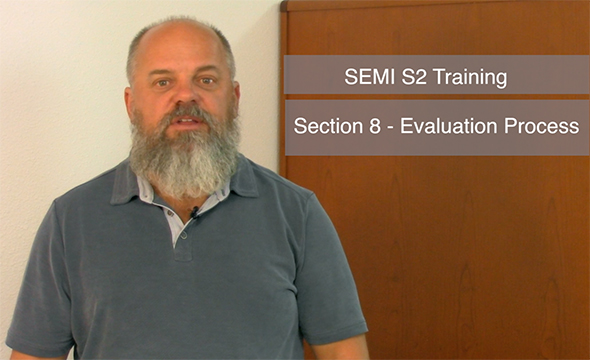As with most things in life, having an understanding of how things are done and what is expected will help determine the success and rate of success. This definitely pertains to getting your product through SEMI S2, the safety guideline for semiconductor manufacturing equipment. and why our CEO, Steve Barcik Amstel finds it imperative to lay the foundation for a quick and successful experience with SEMI S2. This is our continuing video training series on SEMI S2.
(Link to video also available here: https://youtu.be/SSzbvC3KkrQ)
In today’s video, Steve talks about the evaluation process, which is Section 8 from the standard. He walks you through what the standard says about the evaluation process itself.
What there is to do is to evaluate equipment line by line to the sections of SEMI S2 and that really begins in Section 9 and goes through all the way until Section 27. Section 8 talks about how to evaluate line by line to those other sections.
SEMI S2 SEMI S2-0818
ENVIRONMENTAL, HEALTH, AND SAFETY GUIDELINE FOR
SEMICONDUCTOR MANUFACTURING EQUIPMENT
Normative Sections
8 Evaluation Process
9 Documents Provided to User
10 Hazard Alert Labels
11 Safety Interlock Systems
12 Emergency Shutdown
13 Electrical Design
14 Fire Protection
15 Process Liquid Heating Systems
16 Ergonomics and Human Factors
17 Hazardous Energy Isolation
18 Mechanical Design
19 Seismic Protection
20 Automated Material Handlers
21 Environmental Considerations
22 Exhaust Ventilation
23 Chemicals
24 Ionizing Radiation
25 Non-Ionizing Radiation and Fields
26 Lasers
27 Sound Pressure Level
Section 8 starts off with doing observation, testing, collecting information and data looking at that data as it pertains to each individual section. Then with the support of the engineering team at your company and your documentation, drawings and the test equipment that we’ve brought, we will come to a conclusion on each specific line item of the standard. Now sometimes that conclusion will be affirmative, but we have some questions and we will verify that with you. And then sometimes that determination will be negative. Again, we will ask you questions that will verify that and change the response, to affirmative.
SEMI S2 provides us two different ways to say something conforms. It may conform specifically to the section; meaning in that individual case the equipment directly and precisely meets the requirements of that section. Alternatively, we can say that it conforms to a performance standard or that it conforms to the performance goal of that section, which is a higher more in-depth requirement…meaning that we will have to do more to get there. Generally, it is best just to conform directly to each section but we can also do the latter, which works as well.
Then from this place there are other options for us to pick in approving your equipment. A bit more on a finding of your equipment meeting a performance goal of a standard or a section of SEMI S2 would also include us doing a risk assessment of the outcome. So, let’s say you had some performance based achievable conformance, we would also do a risk assessment to verify that the risk was low or very low for that section.
The other option for us to choose for conformance of a section would be “does not conform”. This means that the equipment itself or the documentation or other ancillary requirements are not met and typically during an exit interview with you and your team, we will go over each of those to say here is the finding and we think that it doesn’t conform and give you an opportunity to provide us more data or provide options or best practices to then have the equipment conform. Sometimes a non-conformance might be based on not having enough information. Maybe we are looking for a suitability for use for a subsystem and maybe we don’t have test data on the overheat process of a piece of equipment or maybe you’re not complete with the functional safety evaluation of another section. We include all of this in the report when we do report those findings and summarize those. For each of those non-conformances as well, we will do a risk assessment and determine what level of risk is associated with that non-conformance.
Thank you for watching today’s video about SEMI S2 Section 8 and the evaluation process and report. We will continue with Section 8 in the upcoming video. Please like, subscribe and make comments below. The comments are really helping us out to improve the videos and training. We here at High Tech Design Safety would really like to help you out with your SEMI S2 requirements, either as a design basis or to do the testing for you.
Below you will find a list of all related standard you will need to know if these apply to your equipment, let us help you do that and to interpret and implement these into your deigns;
Referenced Standards and Documents SEMI Standards and Safety Guidelines
SEMI E6 — Guide for Semiconductor Equipment Installation Documentation
SEMI F5 — Guide for Gaseous Effluent Handling SEMI F14 — Guide for the Design of Gas Source Equipment Enclosures
SEMI F15 — Test Method for Enclosures Using Sulfur Hexafluoride Tracer Gas and Gas Chromatography (Withdrawn 1011) SEMI S1 — Safety Guideline for Equipment Safety Labels
SEMI S3 — Safety Guideline for Process Liquid Heating Systems
SEMI S6 — Environmental, Health, and Safety Guideline for Exhaust Ventilation of Semiconductor Manufacturing Equipment SEMI S7 — Safety Guideline for Evaluating Personnel and Evaluating Company Qualifications SEMI S8 — Safety Guideline for Ergonomics Engineering of Semiconductor Manufacturing Equipment
SEMI S10 — Safety Guideline for Risk Assessment and Risk Evaluation Process
SEMI S12 — Environmental, Health and Safety Guideline for Manufacturing Equipment Decontamination SEMI S13 — Environmental, Health and Safety Guideline for Documents Provided to the Equipment User for Use with Manufacturing Equipment SEMI S14 — Safety Guidelines for Fire Risk Assessment and Mitigation for Semiconductor Manufacturing
Equipment SEMI S22 — Safety Guideline for the Electrical Design of Semiconductor Manufacturing Equipment ANSI Standards
ANSI/RIA R15.06 — Industrial Robots and Robot Systems – Safety Requirements ANSI/ISA 84.00.01 — Functional Safety: Safety Instrumented Systems for the Process Industry Sector
CEN/CENELEC Standards
CEN EN 775 — Manipulating Industrial Robots – Safety CEN EN 1050 — Safety of Machinery – Principles of Risk Assessment
CEN EN 1127-1 — Explosive Atmospheres – Explosion Prevention and Protection – Part 1: Basic Concepts and Methodology DIN Standards
DIN V VDE 0801 — Principles for Computers in Safety-Related Systems IEC Standards
IEC 60825-1 — Safety of Laser Products – Part 1: Equipment Classification, Requirements
IEC 61010-1 — Safety Requirements for Electrical Equipment for Measurement, Control, and Laboratory Use – Part 1: General Requirements
IEC 61508 — Functional Safety of Electrical/Electronic/Programmable Electronic Safety-Related Systems IEEE Standards
IEEE C95.1 — Safety Levels with Respect to Human Exposure to Radio Frequency Electromagnetic Fields, 3 kHz to 300 GHz ISO Standards
ISO 2415 — Forged Shackles for General Lifting Purposes Dee Shackles and Bow Shackles ISO 10218-1 — Robots and Robotic Devices – Safety Requirements for Industrial Robots – Part 1: Robots ISO 13849-1 — Safety of Machinery – Safety-Related Parts of Control Systems – Part 1: General Principles for Design
NFPA Standards
NFPA 12 — Standard on Carbon Dioxide Extinguishing Systems NFPA 13 — Standard for the Installation of Sprinkler Systems NFPA 72 — National Fire Alarm and Signaling Code NFPA 497 — Recommended Practice for the Classification of Flammable Liquids, Gases, or Vapors and of Hazardous (Classified) Locations for Electrical Installations in Chemical Process Areas
NFPA 704 — Standard System for the Identification of the Hazards of Materials for Emergency Response
NFPA 2001 — Standard on Clean Agent Fire Extinguishing Systems Underwriters Laboratories Standards
UL 508A — Standard for Industrial Control Panel US Code of Federal Regulations9
21 CFR Parts 1000-1050 — Food and Drug Administration/Center for Devices and Radiological Health (FDA/CDRH), Performance Standards for Electronic Products, Title 21 Code of Federal Regulations, Parts 1000-1050 Other Standards and Documents
ACGIH, Industrial Ventilation Manual
ASHRAE Standard 110 — Method of Testing Performance of Laboratory Fume Hoods
Burton, D.J., Semiconductor Exhaust Ventilation Guidebook
Uniform Building Code™ (UBC)
Uniform Fire Code™


